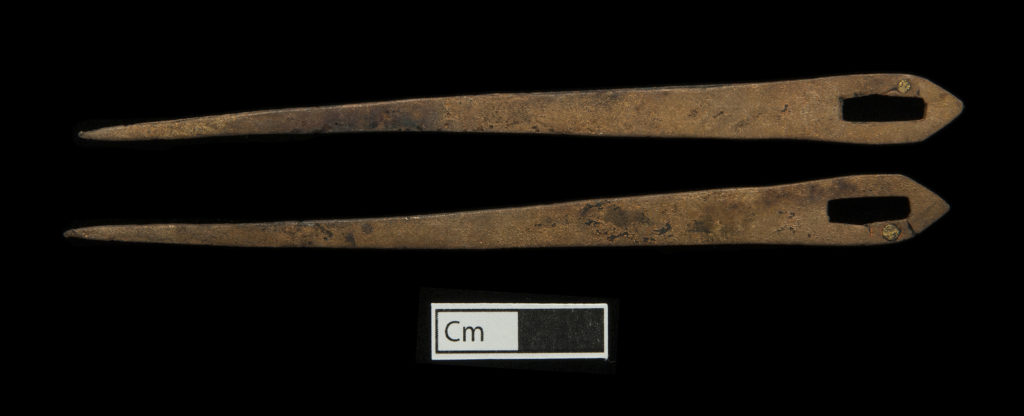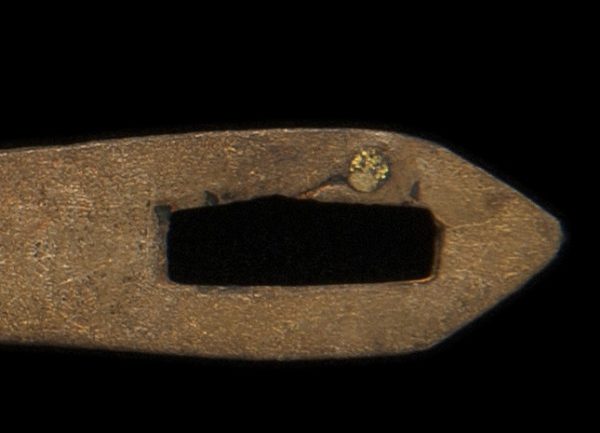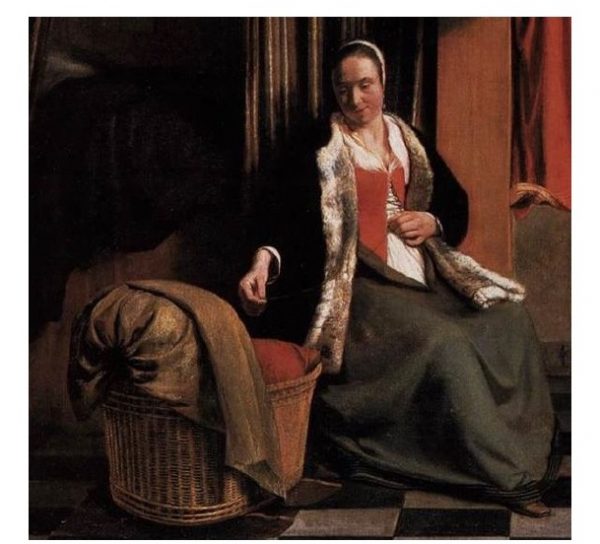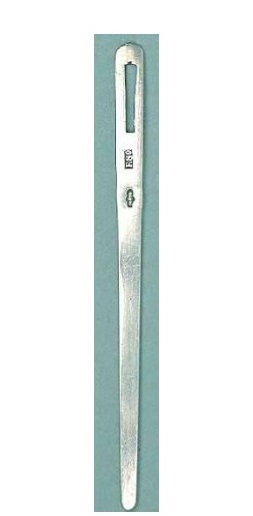March ’19
Bodkin
March’s ‘Object of the Month’ is a brass bodkin found in the river wear in Durham.
The object is a brass bodkin, which was found in the River Wear by Elvet Bridge as part of the excavations led by Gary Bankhead between 2008-2017. To date over 11,000 objects have been uncovered, ranging from the late Medieval period to modern times.

A bodkin is typically a large needle, flattened at one end, that has an elongated eye in the shape of a rectangle or oval, and has a blunt or knobbed point. Bodkins came in a variety of materials such as base metals, silver, gold and ivory, and were often decorated or inscribed with the owner’s initials or name.

Bodkins are objects used to lace ribbon through pre-existing holes, and were typically used by men and women to lace up their garments. Women wore bodices that required lacing which were the height of fashion in the 17th-19th centuries and it is probable, because their clothing required it more than men’s, that this bodkin was used by a woman for this purpose. This social context provides an initial date range of the 17th-19th century for this bodkin.

This bodkin has an unusual manufacture, as bodkins were typically cast made, however the evidence of a rivet does not support this. This bodkin was likely manufactured from sheet metal, which would have been folded in two and then cut into shape. After this, the object would have been annealed, which is to heat the metal to soften it for working. After annealing, when the metal is softer, the point of the object would have been folded over to provide a blunt ending.

After the shaping of the object, the eye would have been pierced by producing a hollow groove with a punch and then striking it through with a hammer. Once the eye was made, the placement of the rivet would have been the final stage of the object’s manufacture. The rivet was needed to secure the seam, otherwise, it would gradually split apart.
During the 17th-19th century, the high female fashion was to wear a tightly fitted bodice that would usually be laced up at the front with a ribbon. The most common dress for the period was a bodice joined to the open over skirt, and this was either open to reveal a ‘stomacher’ (a type of panel) beneath that was elaborately decorated, or a closed, laced bodice.

This fashion was influenced by France, which was the established leader of fashion during this period. Additionally, the return of the English monarchy in 1660, fuelled a rise in laced garments and garments heavily decorated in lace, to the point of extravagance.

Judging by the material and absence of decoration on this bodkin, it is unlikely that its owner was wealthy enough to keep up with these extravagances. Nevertheless, the typical wear for a working woman, was an ensemble composed of a separate bodice and skirt, from this, we can imply that the owner of the bodkin was of working class status.
Bodkins were more than just utilitarian objects, but were well known as being highly personal items that shared an intimacy with their owners. As they were used to present and clothe women, they were privy to the most delicate secrets of a woman. They are also often described as objects of identity and personhood as they can be displayed on the body as symbols of financial and marital status. If one wore their bodkin on the right-hand side of their bodice, they were married, and if worn on their left, they were unmarried.
Stay tuned for next month’s object!
